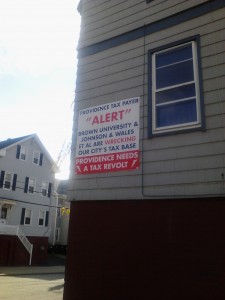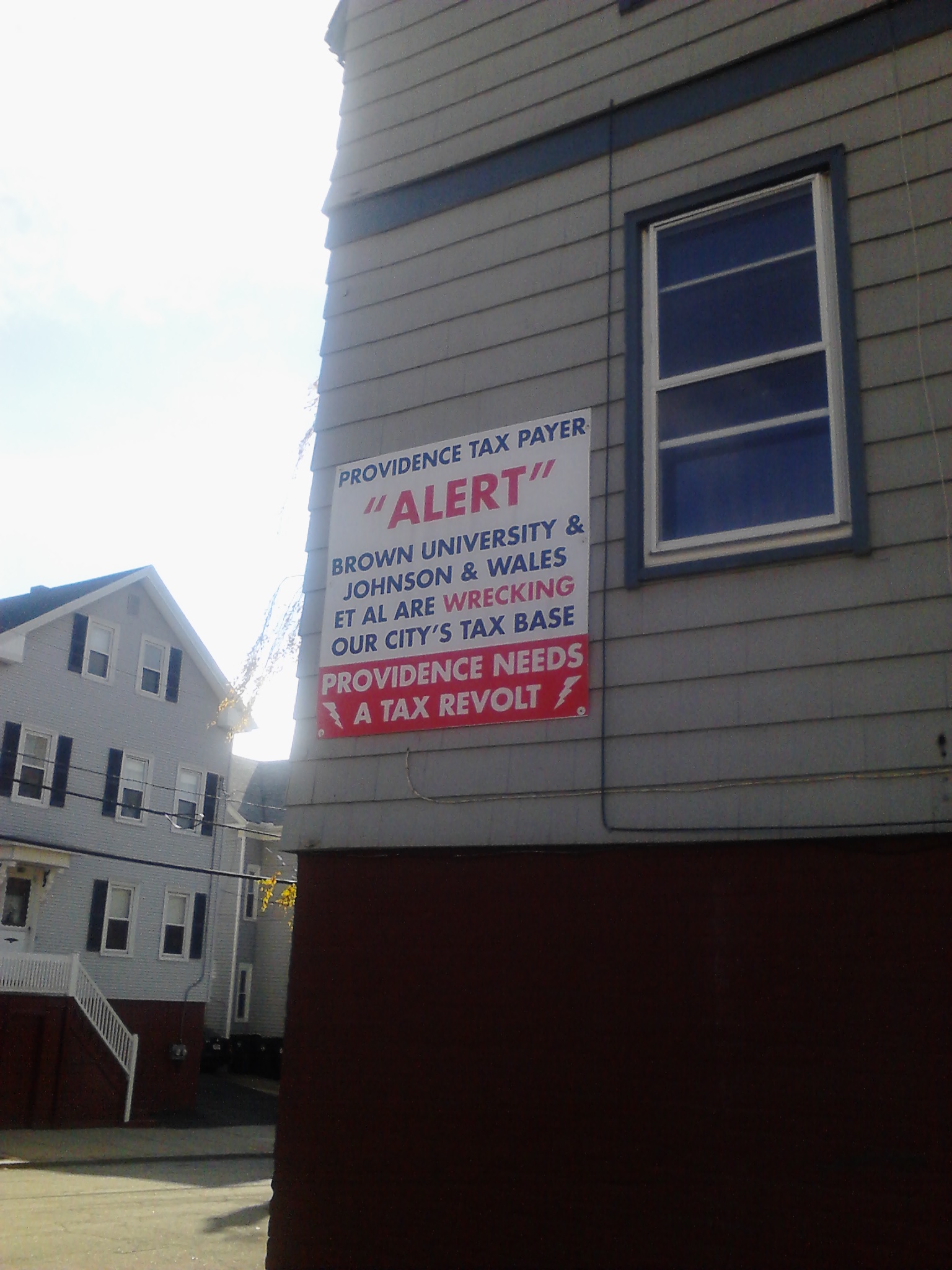
Many cities with desperate downtowns are attempting to lure big business in by hook or crook. The New York Times recently ran a multi-week series, including a cool online graphic called “The United States of Subsidies” about how state, local, and national incentives shape the economy. Many of those subsidies are about downtown revitalization.
One major subsidy has become a rallying cry in Providence: tax breaks for not-for-profit enterprises. The hospitals, Brown, RISD, Johnson and Wales, the city government, and the state government (through their own offices and state colleges like URI) own most of the downtown land in Providence, without paying taxes on it. You may have seen signs around town that scream “Providence Needs a Tax Revolt!” Citizens who make this claim worry that all these major institutions, the largest employers in town, do not pay property tax.
Since the project to move I-195 and connect the rest of the Jewelry District with Downcity Providence, this fact has come to a head. The project opened up 44 acres connected to downtown, but at great expense. The organizations in the state with the money and credit to develop the acreage, however, would be the ones that would take it off the tax rolls. People who expended lots of political capital, societal resources, and money to move the interstate had Providence making some profit back in mind.
Brown participates in a program here called PILOT (Payment in Lieu of Taxes) which does pay Providence a lump sum yearly. For land-starved Brown to get its hands on some of the 44 acres, I bet the PILOT amount will change.
Still, as this plays out in Providence, with the innovative PILOT program, other cities watch. Huge nonprofits, often the largest employers in the town, are buying up land in many major cities. New York watches as NYU and Columbia expand in the Village and Harlem. Many state schools even have the power of eminent domain to expand. Hospitals, too, many registered not-for-profits; expand rapidly as the population ages and demand for hospital beds rises.
Many towns have this problem. For example: what are the most valuable pieces of property in Cambridge, MA? Institutions that are not paying taxes. Brown, Harvard, and others have a quick rejoinder: much the property tax in the city comes from pieces of property that are valuable because they are close to Brown. How valuable would Thayer and Waterman Street properties be if it were not for Brown? Brown does certainly contribute to the Providence tax base that way. Harvard and MIT say the same thing: what would the Cambridge tax base be if it were not for Harvard and MIT. College towns are company towns in that way.
The tax incentives intend to further societal goals. We want universities and we want hospitals in our communities. These institutions can bring a lot of vibrancy into a neighborhood. Many cities thrill over development and job creation. However, when they do well and expand, it can come at a cost to the tax base. Cities across America seek the proper balance to support these institutions, which add so much to town.
